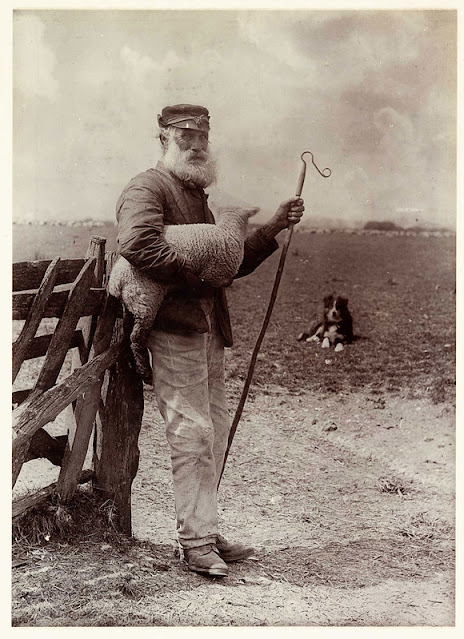Crook O' Lune by ECR Lorac
published 1953
Last week I posted on ECR
Lorac’s Death of an Author. Her Crook O’Lune – ‘a Lancashire
Mystery’ – came in 1953 (nearly 20 years later) and couldn’t be more different. This one features
Lorac’s series detective Inspector Robert MacDonald, missing from Author. But
also, Crook O' Lune more than most is all about the setting - remote valleys and
villages in Lancashire, and the lives of the farmers and workers there. It is
very obviously based on a real place, and one that Lorac knew well (see below...). The plot is
complex, and very well done, but the real achievement in the book is the
picture of people and their individual worlds: the couples working hard to
build a life and eke out their money, the shepherd living the same way his
forebears did hundreds of years before, the troubles caused by wills and
bequests and cranky people. There
are those whose families have been in same place for generations, contrasted
with rootless people who move around, lives disrupted by the war that ended a
few years before. There are the solid certainties of the hill farmers, and
there are the changes that always come, whether it’s an Education Act or
rationing.
And
she has thought about the inner lives of her characters:
Men who live solitary lives—and most shepherds spend the
greater part of their time alone—often have an awareness that is implicit
rather than explicit. “Words aren’t their medium,” meditated Macdonald. “The
things they do so skilfully aren’t the result of thought, but of long practice:
the skill becomes ingrain, like a conditioned reflex, and words have nothing to
do with it.”
You believe that she reports on all this authentically
and well. I read it a while back, and
don’t honestly remember that much about the final solution but the setting lives
on in my mind.
In a Foreword from the author, Lorac says this: ‘Incidentally,
the house I have called Aikengill is not for sale, nor is it to let. I live in
it myself.’ Martin Edwards
has done a fascinating Introduction for the British Library edition in which he
tells us more about the real life traces in the book. And so well done to the British Library for
reprinting her works – there is a theory that she has been under-rated because
she was so productive, that people assumed the quality must be low. But she is
a really reliable writer – yes some of her books are better than others, but
you can at least hope to enjoy a few hours of classic crime and detection with
her.
Top picture from the National
Media & Science Museum in Bradford. "A photograph titled 'Ninety
and Nine', showing an elderly shepherd carrying a lamb and holding a crook,
taken by Colonel Joseph Gale (c 1835-1906) in 1890. This image of rustic life
shows a shepherd resting at a gate to his field, a lamb under his arm. His
faithful sheep-dog waits in the background for his master's next command."
Second picture: "Jevington, Sussex. A shepherd and his dog with a southdown flock on the Sussex Downs near the village of Jevington."


I've always thought Lorac did her settings well, Moira, and that's a real plus in her writing. It sounds as though this is a bit more introspective and perhaps has less wit in it than some of her work, and that can be effective, too. And I do like books that explore not just the scenery and physical setting of a place, but also its psychological and cultural setting.
ReplyDeleteYes, I agree Margot. Lorac does the post-War atmosphere so well, and manages to combine a faint melancholy for lost times with some hope for the future. I liked that very much.
DeleteI've never met a Lorac novel I didn't like, but I must say I prefer her later stories, set in the countryside. The mystery plots are satisfying, but I find myself more interested in the setting and characters and depictions of farm life. I have just finished reading the earlier THESE NAMES MAKE CLUES, and there I felt Lorac was constrained by the rigid requirements of her puzzle plot, that she was trying (somewhat awkwardly) to be J.D. Carr. Later after she moved to the country her work seemed easier and more natural, as if she "found her voice."
ReplyDeleteThanks - I feel much the same. She definitely moved from puzzle to atmosphere I think. That said, I have always been intrigued by the title These Names Make Clues, and no doubt will read it eventually!
DeleteAnother Lorac mystery set in the same area is "Fell Murder" from 1944. McDonald eventually planned to buy hill farm there for his retirement, in "The Last Escape" from 1959 (the last McDonald book).
ReplyDeleteOh thanks, I will look out for those two. I think he mentions his plan in this one.
Delete